Trekking in the Pamirs of Tajikistan
When Christian told me about his plans to cross a remote mountain range in the western part of the Pamir Mountains without any support by guides or porters, I was instantly hooked. I had been to the Tajik Pamir years before and always wanted to return for a proper trekking expedition. Flushed with memories of glimmering turquoise mountain lagoons, ice-covered mountain ranges and the adventurous Pamir Highway – a dirt road only partly paved and scattered with giant potholes, that never drops below 3500 metres – I could not resist and booked my flight.
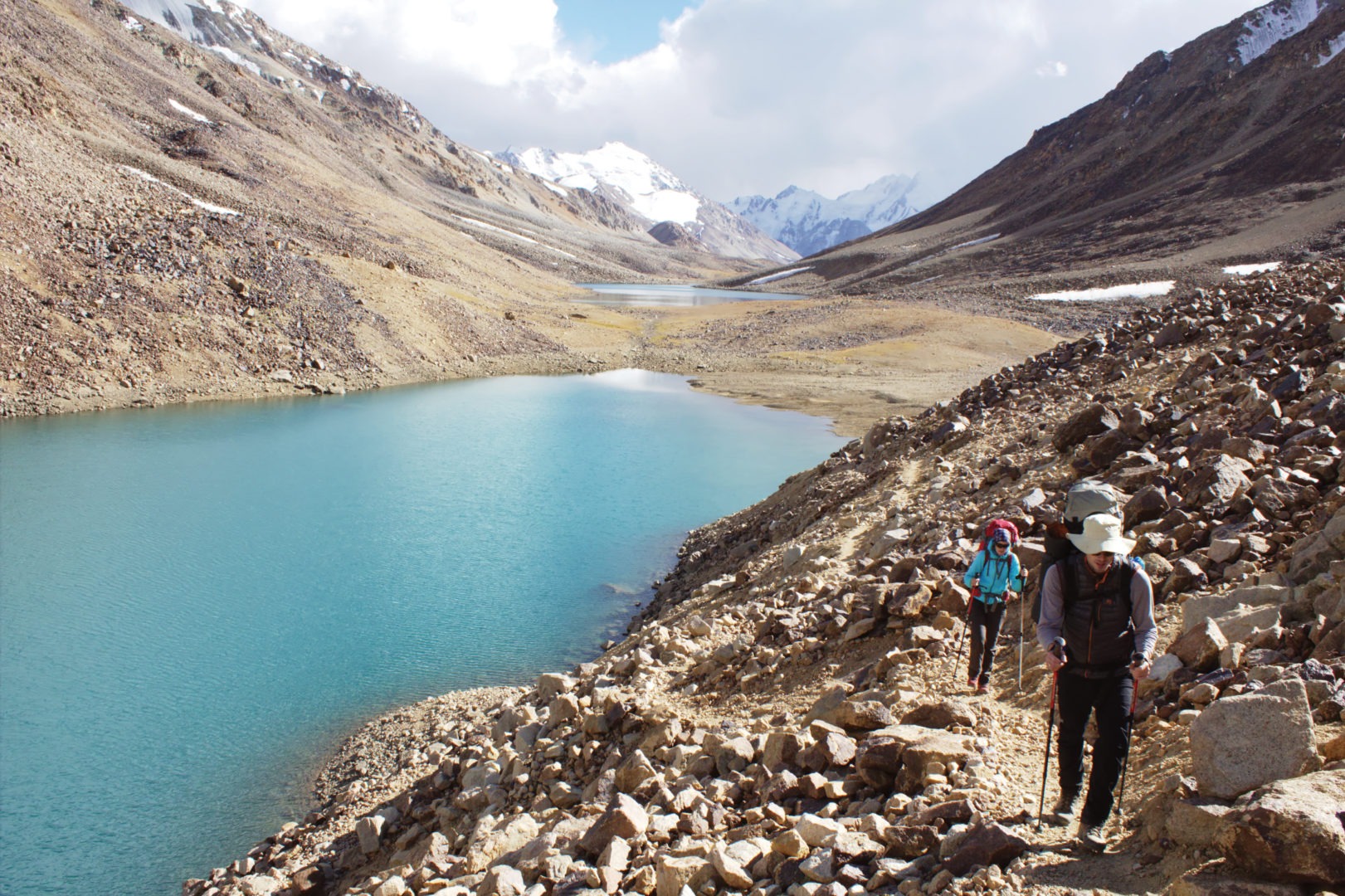
It’s the lure of the unknown, the beauty of pure pristine nature and the spirit of adventure that keep drawing me to some of the most exotic and remote places on earth. This time I was part of a four-member expedition team trying to cross the Rushan Mountains in Gorno-Badakshan, a province of Tajikistan in the far east of the former Soviet Union, sharing borders with Afghanistan, Kyrgyzstan and China.
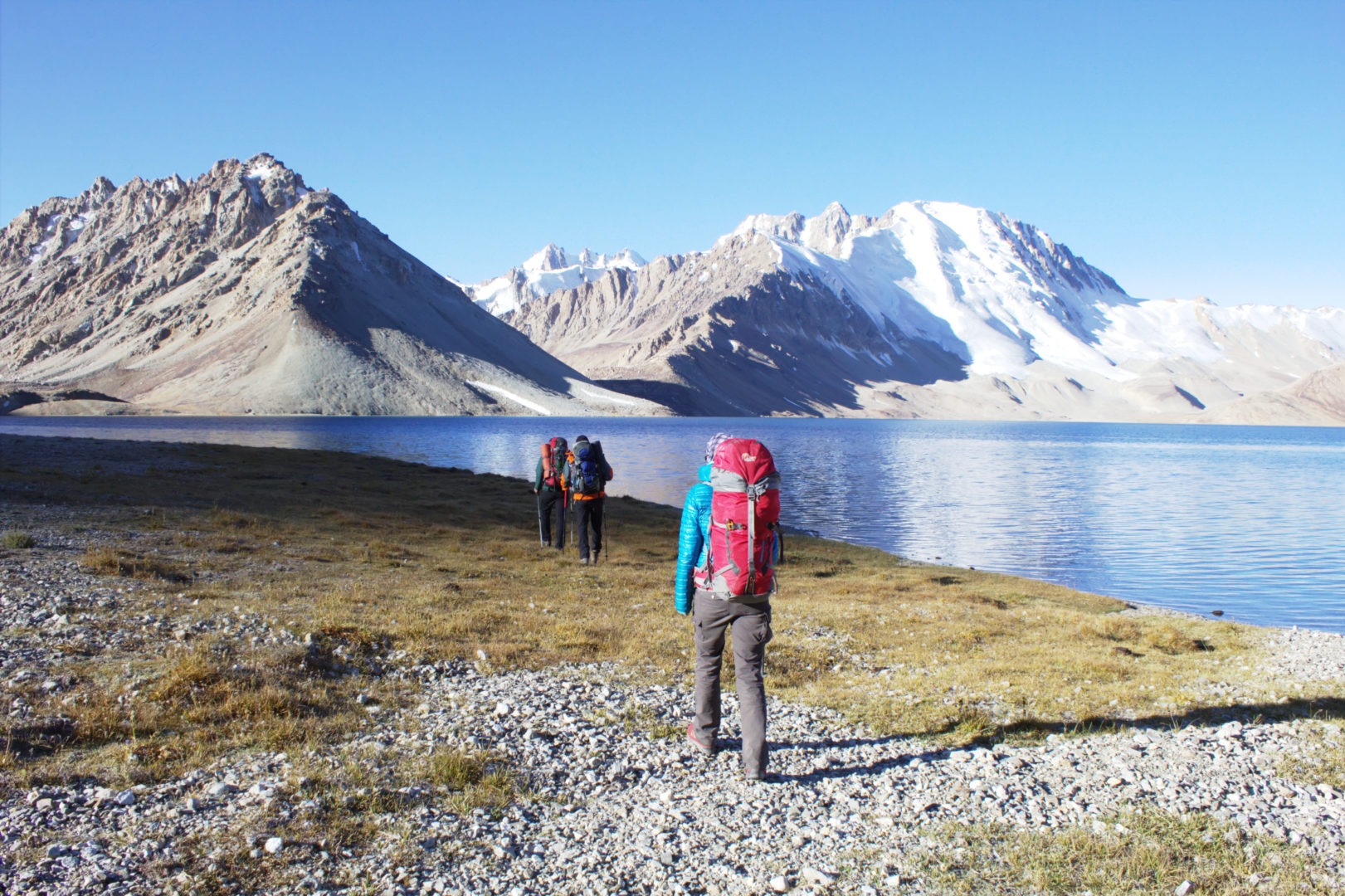
Just getting there was an adventure in itself and took a lot of time and energy. From Dushanbe, the capital of Tajikistan, there are only two options to get into the Pamir: either you take a 16-20 hour four-wheel drive along the M41 – the only road that connects the Pamir with the rest of the country – or you take a small Russian Antonov, built for 15-18 passengers, and which can only fly in very stable weather conditions.
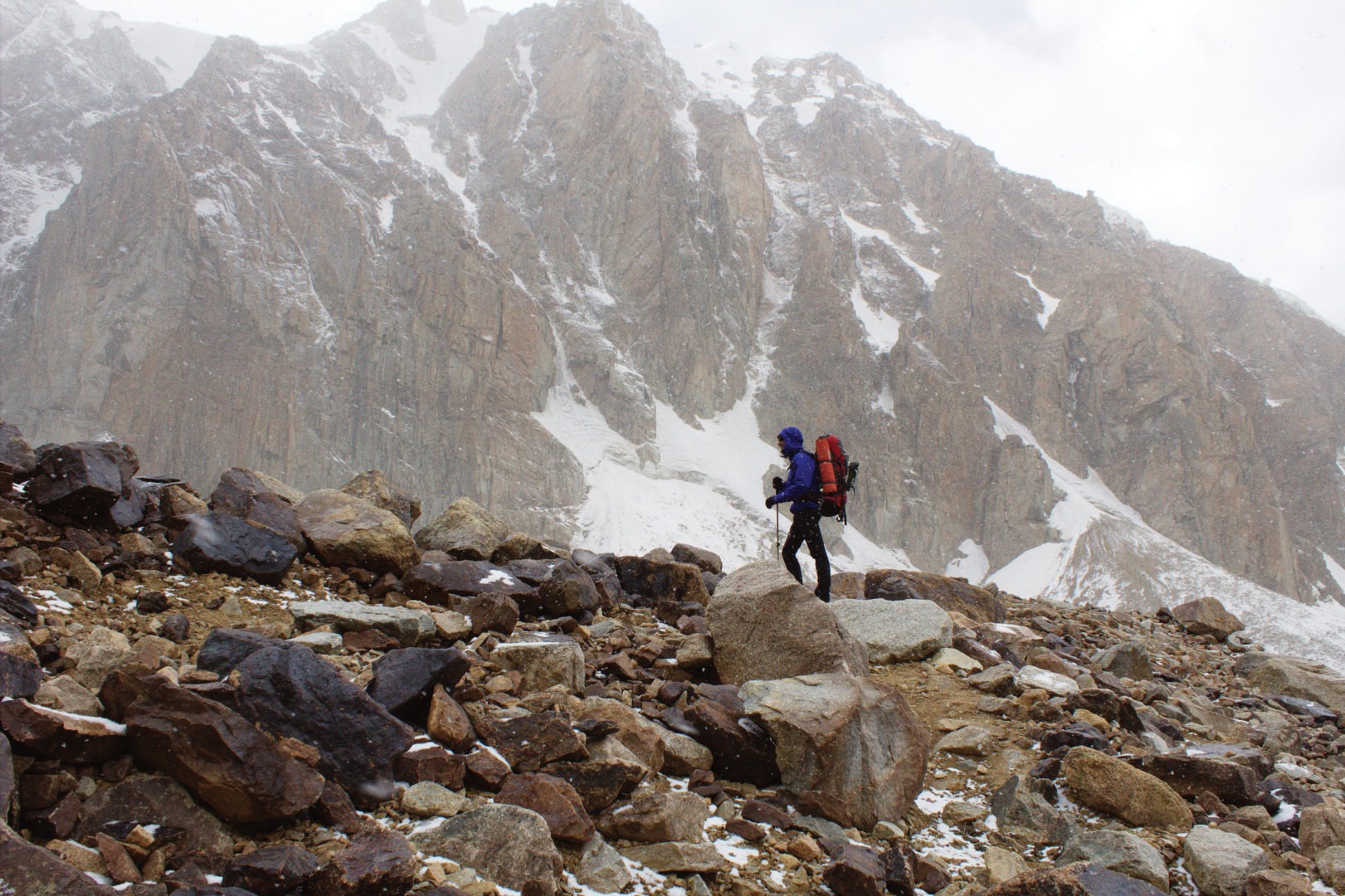
The four of us went for the first option and experienced a very bumpy ride, with a broken axle halfway through and getting stopped by the military almost every half an hour to show our passports (stuffed with some dollar bills by our Tajik driver). When we finally reached the Panj River, which forms a large part of the Afghan-Tajik border, the scenery became truly spectacular. From here on our road constantly followed the dusty river bed, only a stone’s throw away from the Afghan border. The M41 was carved right into the steep valley walls, leaving massive mountain cliffs towering overhead. At around 2 in the morning we eventually arrived at the confluence of the Panj and the Bartang Rivers, close to the starting point of our expedition.
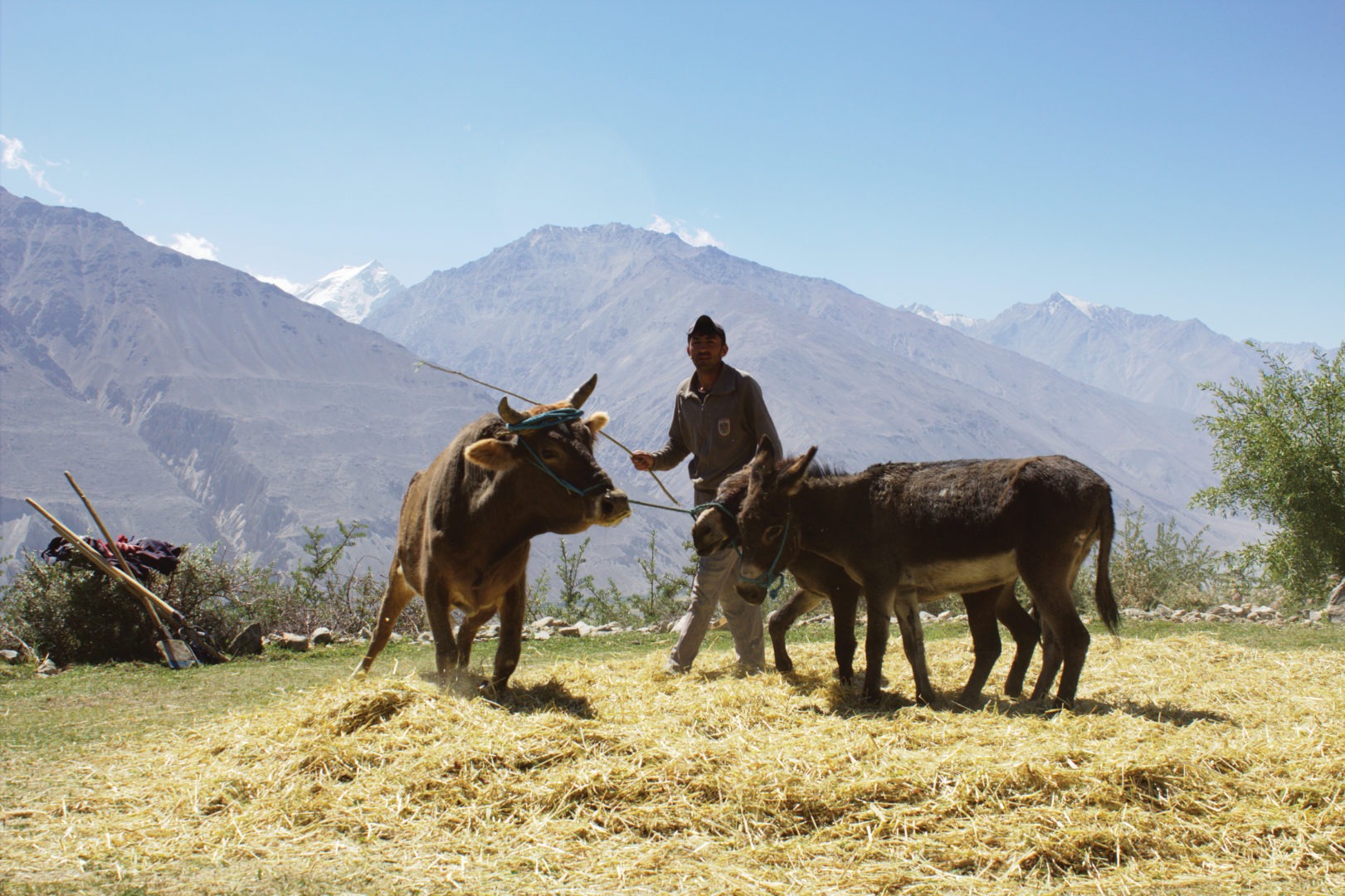
The next day we followed the Bartang River further upstream on a dusty gravel track. Our plan: the driver would drop us off in Bardara, the last village of the valley where the road track ends. From there we would try to cross the remote Rushan Range within 4 days and hopefully arrive at Yashikul Lake on the other side, where our driver would pick us up again. Based on our study of old Soviet maps and satellite pictures, the trip seemed possible. Nevertheless, there was a fair degree of uncertainty about what the conditions would be like once we actually got there. Would there already be snow on the high passes? Would the level of the streams be low enough to cross?
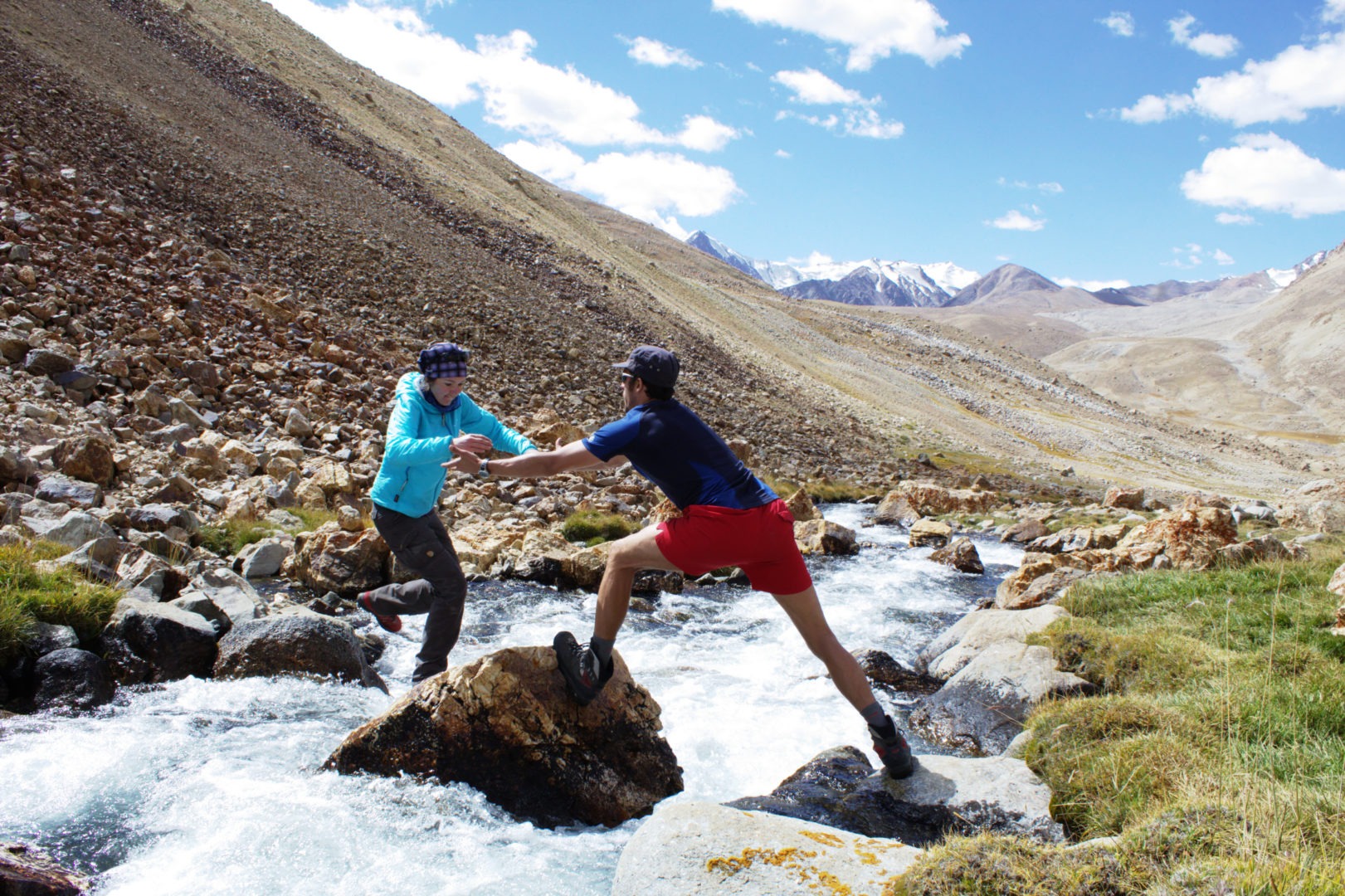
After a very warm welcome by the locals and an invitation for dinner by a Pamiri family, we started quite early the next morning, our backpacks stuffed with tents, cooking stove, food for almost a week and a satellite phone we had brought from Germany. Leaving Bardara, the scenery became even wilder. From here on, rocks, torrential river streams and snow-covered mountain peaks were our only company. We mainly walked on small shepherd trails, passing some abandoned stables from time to time. It was mid-September and most of the shepherds had already left the high summer pastures to bring their cattle down to the valley. After several river crossings and an altitude gain of more than 1000m, we finally set up our tents on the shore of a remote mountain lake and enjoyed the dramatic beauty of the surrounding landscape.

The next day was pretty exhausting. The 4800m high Bardara Pass was quite a challenge and with the increasing lack of oxygen our backpacks seemed to get even heavier. When it began to snow, there was a moment of true concern and for the first time we used our satellite phone to check the weather report. By the time we finally reached the top of the pass, the sky had fortunately cleared up and a spectacular scene emerged on the other side. Below the ice and snow, we saw a series of sparkling turquoise mountain lagoons, pristine and crystal clear, stretching right into the stony desert. Again we camped on a lake shore, completely exhausted and dizzy from the altitude, but overwhelmed by the pure beauty of the place we had entered.

Over the next two days we walked consistently between 4500 and 4800 metres of altitude, passing even more mountain lakes, streams and ice-covered mountain faces. We spent endless hours putting one foot in front of the other, barely talking and lost in thought. On the last night I started to feel quite a strong headache, nausea and a racing pulse. Knowing that these are all signs of altitude sickness, we had to lose altitude as quickly as possible and left our camp at early dawn the next day. Hiking down on the other side of the mountain plateau was strenuous and the path seemed never ending. Finally, after hours and hours of stumbling down the stony slopes, we caught our first glimpse of the blue waters of Yashikul Lake. However, there were two more hours of nervous waiting at the lakeside before our driver eventually showed up to get us out of our remote destination. That’s when we finally knew that we’d really made it – that we’d managed to cross the beautiful Rushan Mountains by foot!

More travel inspirations at our blog page


